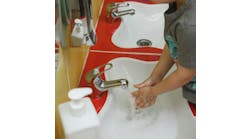Four years ago, as my elder son was finishing elementary school and we took a tour of what would be his middle school, my concerns about how he would fare on a larger campus were allayed by the fact that the middle school wasn’t very large at all—about 500 students, compared with more than 900 at the district’s largest middle school.
Now Son No. 2 is about to make that same transition. The school he’ll attend in August has the same name and is in the same location as the one his brother survived, but it will be a much different learning environment. Like many school systems, our local district is facing a one-two punch of declining enrollment and shrinking state support, and the board is shutting down two middle schools.
Boundary lines have been redrawn, and a building that was comfortably accommodating 500 students now will welcome about 750—a 50 percent enrollment jump.
For most students—or at least the one I know best—the excitement over leaving elementary school behind and approaching a new adventure overshadows any worries about the logistics of absorbing a couple hundred schoolmates who until a few months ago thought they would be going to different schools and viewed this one as a rival.
But parents, although relieved we dodged a bullet when our school wasn’t closed, are wary of the changes and the consequence they will have for our children’s education. The questions seem never-ending: Will the district increase staffing to handle the additional students? Will class size increase? Will the influx of students from other neighborhoods alter the school climate and culture? Will there be enough lockers? Is a four-minute passing period adequate? Can the lunchroom handle all the extra meals? Will the additional buses and student dropoffs create gridlock every morning and afternoon?
The school staff has anticipated most of these issues and has made a plausible case that, in some respects, bigger may turn out to be better. Like educators around the nation who are experiencing similar upheaval, they are making the best of the hand they’ve been dealt.
Kennedy is staff writer for AS&U.


